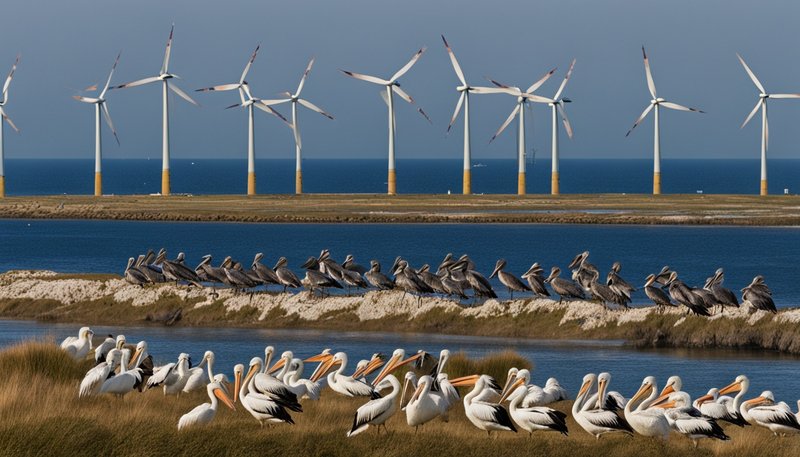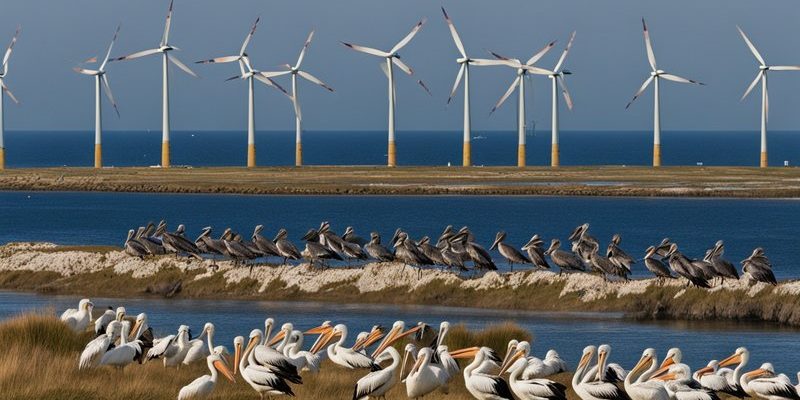
You might be wondering how exactly we can protect pelicans and what’s being done to help them. The truth is, there’s a variety of initiatives aimed at conserving pelican populations worldwide. Imagine a team of dedicated individuals working together—scientists, activists, and everyday people—all focused on the same goal: helping pelicans soar high in the sky and fish freely in the sea. Through habitat restoration, wildlife education, and legal protections, these conservation efforts are making a real difference.
The Importance of Habitat Protection
Pelicans rely on wetlands, coastal areas, and estuaries for nesting and feeding. Unfortunately, these habitats are often threatened by urban development, pollution, and climate change. Protecting these environments is crucial for pelicans. Think of their habitat as a cozy home; if the roof leaks or the walls crumble, the residents will struggle to survive.
Many conservation organizations focus on preserving and restoring these vital habitats. They work to secure land, clean up polluted areas, and replant native vegetation. For instance, in places like Florida, initiatives have been launched to restore the mangroves that serve as nesting sites for pelicans and other birds. By investing in these environments, we are investing in the future of the pelican population.
How Habitat Loss Impacts Pelicans
When pelican habitats are destroyed, the consequences can be dire. Without safe nesting areas, pelican populations can decline rapidly. Vulnerable to predators, weather changes, and disturbances, their young can easily perish without a secure environment. Furthermore, when their food sources diminish due to overfishing or pollution, pelicans struggle to find enough to eat. Just as we would feel stressed and anxious in a chaotic home, pelicans face similar challenges when their habitats are threatened.
Legal Protections for Pelicans
In many countries, pelicans are protected under various wildlife laws and agreements. For example, in the United States, the Migratory Bird Treaty Act makes it illegal to harm these birds or their nests. This is like putting up a “Do Not Disturb” sign around a pelican’s home, ensuring that they are safe from harm.
But laws alone aren’t enough. Conservationists must actively enforce these protections. This often means monitoring pelican populations, investigating violations, and promoting compliance among local communities. When everyone plays by the rules, pelicans have a better chance of thriving.
Success Stories of Legal Protection
Take the brown pelican, for instance. Once on the brink of extinction due to hunting and pesticide use, concerted conservation efforts—including legal protections—have helped their numbers bounce back in certain regions. Stories like this remind us that every effort counts and that with the right support, pelicans can reclaim their place in the ecosystem.
Community Involvement and Education
Conservation isn’t just about scientists; it’s a community effort. Local communities can play a significant role in protecting pelicans. Education programs focused on wildlife conservation help people understand their impact on the environment and the importance of protecting local wildlife.
When communities are informed, they often become passionate advocates for pelican protection. Schools, nature centers, and local organizations are increasingly hosting events to raise awareness about the challenges pelicans face and how individuals can help. From beach clean-ups to bird-watching tours, these activities foster a love and respect for nature.
Engaging the Public
Imagine a group of children learning about pelicans while watching them dive for fish. Their excitement can inspire a lifelong passion for conservation. When people feel connected to wildlife, they’re more likely to take action. Engaging the public through hands-on experiences not only raises awareness but also builds a sense of responsibility for protecting our feathered friends.
The Role of Research and Data Collection
Research is critical for understanding pelican populations and the challenges they face. Scientists gather data on feeding habits, breeding patterns, and population dynamics. This information helps shape effective conservation strategies. Without this knowledge, it would be like trying to navigate without a map—you may have good intentions, but it’s easy to get lost.
Organizations like the U.S. Fish and Wildlife Service conduct regular surveys of pelican populations. These studies help track changes in numbers and identify potential threats. By analyzing data, researchers can develop targeted conservation actions, ensuring that efforts are both effective and efficient.
Partnering with Universities and Research Institutions
Many conservation groups collaborate with universities and research institutions to enhance their understanding of pelicans. This partnership can lead to innovative solutions and new approaches to conservation. Students often join the efforts, gaining hands-on experience while contributing to meaningful change. It’s a win-win situation that strengthens both education and conservation.
Addressing Climate Change Impact
Climate change poses a significant threat to pelicans and their habitats. Rising sea levels, extreme weather events, and temperature shifts can disrupt their feeding and nesting practices. The challenges are akin to navigating a stormy sea without a compass—the future can seem uncertain and overwhelming.
Conservationists are actively working on strategies to mitigate climate change impacts. This includes advocating for cleaner energy sources, restoring coastal ecosystems, and implementing policies that promote sustainability. Each small step can help create a more stable environment for pelicans and other wildlife.
Innovative Approaches to Combat Climate Change
Some organizations are harnessing technology to understand pelican behavior in a changing climate. For example, satellite tracking can provide insights into migration patterns and habitat use, informing conservation strategies. By staying one step ahead of potential threats, conservationists can better protect these majestic birds.
How You Can Help Protect Pelicans
You don’t need to be a scientist or a conservationist to make a difference. There are plenty of ways for individuals to help protect pelicans. Here are just a few tips:
- Participate in local clean-up events to keep habitats free from trash.
- Advocate for policies that protect bird habitats and promote sustainability.
- Educate yourself and others about the threats pelicans face.
- Support organizations dedicated to wildlife conservation through donations or volunteering.
Every little bit counts, and your efforts can contribute to a larger cause. Just imagine the impact you can have by taking small steps to help protect these incredible birds!
In closing, conservation efforts for pelicans are a collective mission that requires commitment from individuals, communities, and organizations. By protecting their habitats, enforcing legal protections, engaging communities, conducting research, addressing climate change, and taking personal action, we can ensure pelicans continue to grace our skies for generations to come. Just like a breathtaking sunset over the ocean, the beauty of pelicans is a treasure we should all work to preserve.

